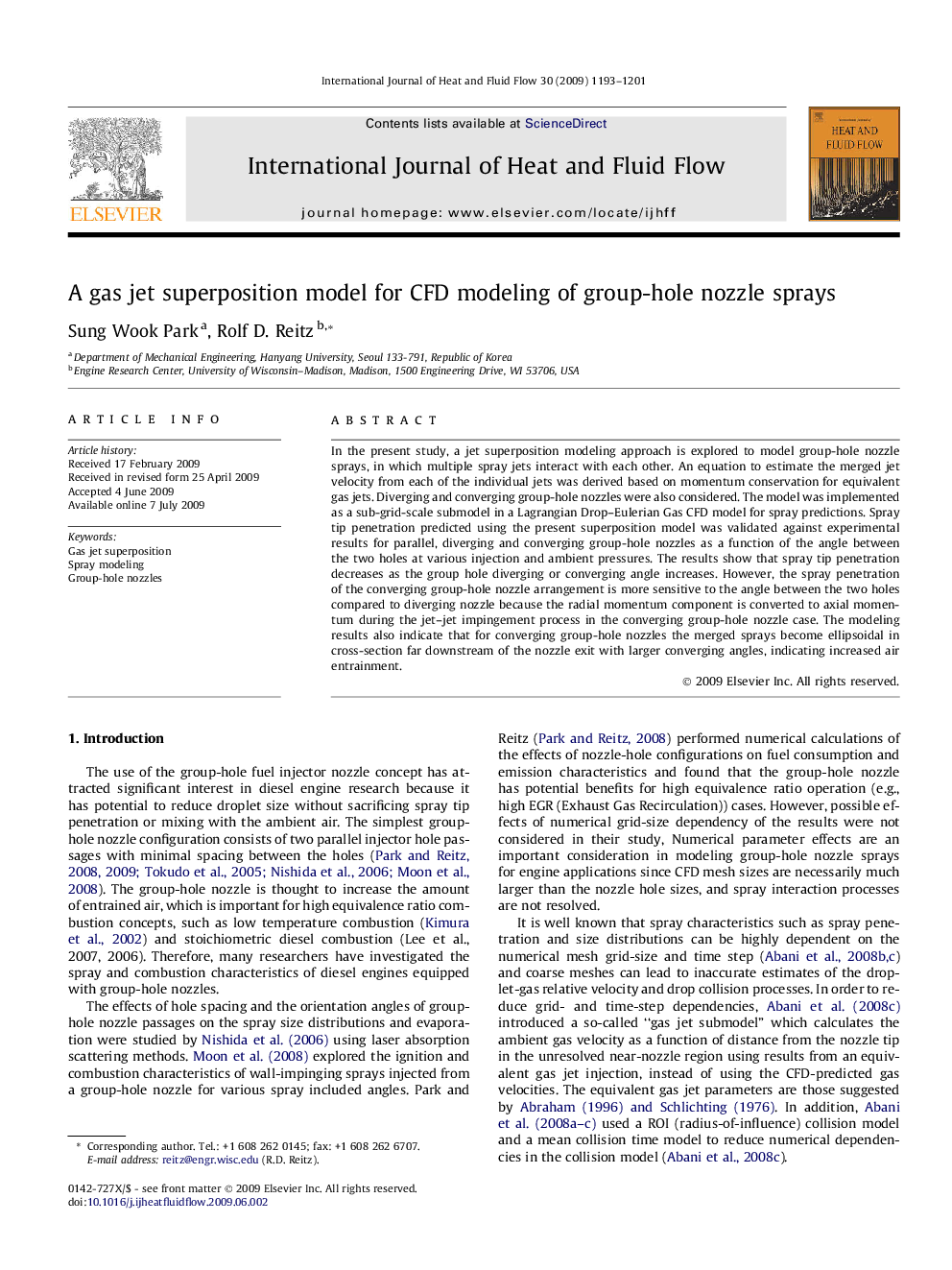| Article ID | Journal | Published Year | Pages | File Type |
|---|---|---|---|---|
| 655799 | International Journal of Heat and Fluid Flow | 2009 | 9 Pages |
In the present study, a jet superposition modeling approach is explored to model group-hole nozzle sprays, in which multiple spray jets interact with each other. An equation to estimate the merged jet velocity from each of the individual jets was derived based on momentum conservation for equivalent gas jets. Diverging and converging group-hole nozzles were also considered. The model was implemented as a sub-grid-scale submodel in a Lagrangian Drop–Eulerian Gas CFD model for spray predictions. Spray tip penetration predicted using the present superposition model was validated against experimental results for parallel, diverging and converging group-hole nozzles as a function of the angle between the two holes at various injection and ambient pressures. The results show that spray tip penetration decreases as the group hole diverging or converging angle increases. However, the spray penetration of the converging group-hole nozzle arrangement is more sensitive to the angle between the two holes compared to diverging nozzle because the radial momentum component is converted to axial momentum during the jet–jet impingement process in the converging group-hole nozzle case. The modeling results also indicate that for converging group-hole nozzles the merged sprays become ellipsoidal in cross-section far downstream of the nozzle exit with larger converging angles, indicating increased air entrainment.
